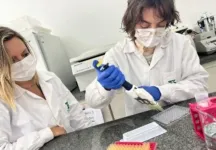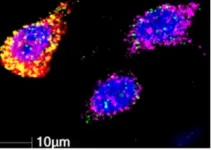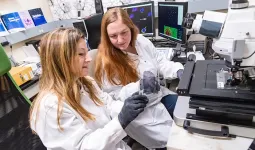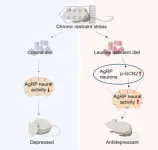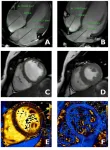(Press-News.org) Pain afflicts at least 1.5 billion people worldwide, and despite the availability of various painkilling drugs, not all forms of pain are treatable. Moreover, pain medications can have side-effects such as dependence and tolerance, especially in the case of morphine and other opioids.
In search of novel painkillers, researchers at Butantan Institute’s Special Pain and Signaling Laboratory (LEDS) in São Paulo, Brazil, studied TRPV1, a sensory neuron receptor that captures noxious stimuli, including heat and the burning sensation conveyed by chili peppers, and discovered a potential pain insensitivity mutation in the gene that encodes this protein. They report their findings in an article published in the Journal of Clinical Investigation.
The study was supported by FAPESP and conducted in partnership with Stanford University and Emory University in the United States, and Münster University Hospital in Germany. The researchers analyzed a number of mutations in humans and also benefited from existing knowledge of birds, which unlike mammals have a TRPV1 receptor that is naturally resistant to noxious insults and even peppery food, yet can still perceive pain.
“There are more than 1,000 TRPV1 mutations in humans, and there’s nothing novel about trying to switch the receptor off in order to relieve pain, but these attempts haven’t been successful until now,” said Vanessa Olzon Zambelli, a researcher at LEDS and co-first author of the article. “First, many drugs resulting from this process interfere with body temperature regulation. Second, TRPV1 is an important channel for signaling heat, and completely altering its activity cancels out physiological pain, interfering with the sensation of burning heat, which has a protective function.”
The researchers began by exploring a genome database to compare the genetic sequences of avian and human TRPV1. Using a computational approach, they identified five avian mutations they believed to be linked to resistance to pain. Cryogenic electron microscopy (which does not require large sample sizes or crystallization and is therefore suited to the visualization of structures at near-atomic resolution) showed that the five avian mutations were located in K710, an amino acid residue believed to control gating (opening and closing) of the TRPV1 channel.
The mutations can also be present in humans, but they are very rare, so the researchers decided to find out what would happen if they were “transplanted” into mammals. When they tested these variants in genetically modified cells, they found that the function of the channel was indeed altered. Next, they used the CRISPR/Cas9 gene editing technique to create mice with the mutation K710N, which they had previously found to reduce the receptor’s reaction to capsaicin in cells. Capsaicin is the active principle in pepper.
The researchers did not observe nociceptive behavior (suggesting avoidance of pain) in mice with the K710N mutation injected with capsaicin and given peppery chicken feed, in contrast with the behavior of normal mice, which lifted their paws to avoid touching the capsaicin, presumably because even skin contact caused pain.
The mice with the K710N mutation also showed less hypersensitivity to nerve injury, while their response to noxious heat remained intact. Furthermore, blocking the K710 region in normal mice limited acute behavioral responses to noxious stimuli and returned pain hypersensitivity induced by nerve injury to baseline levels.
In addition to modulating pain, TRPV1 also plays an important role in protection against other stimuli. For example, recent evidence suggests that it serves in non-neuronal cells as an intracellular molecular sensor that protects against glucose-induced cellular stress or tissue ischemia. Additional tests performed as part of this study involving cardiomyocytes (heart muscle cells) insulted with hydrogen peroxide, high levels of glucose and a cerebral ischemia model confirmed the protective effect even with the mutation.
Translational analysis
The second part of the study consisted of an attempt to reduce the receptor’s function pharmacologically. To this end, the researchers developed a peptide, V1-cal, which acted selectively on the K710 region. Mice treated with V1-cal and given capsaicin displayed less nociceptive behavior and diminished release of neuropeptides leading to neurogenic inflammation and edema without altering temperature. Lastly, chronic pain also improved considerably.
“We now want to add value to this study by validating the results under best-practice laboratory conditions [required by regulatory agencies], identify other small molecules besides the peptide that can more easily be synthesized, conduct preclinical trials and, if these are successful, begin a clinical trial,” Zambelli said.
About São Paulo Research Foundation (FAPESP)
The São Paulo Research Foundation (FAPESP) is a public institution with the mission of supporting scientific research in all fields of knowledge by awarding scholarships, fellowships and grants to investigators linked with higher education and research institutions in the State of São Paulo, Brazil. FAPESP is aware that the very best research can only be done by working with the best researchers internationally. Therefore, it has established partnerships with funding agencies, higher education, private companies, and research organizations in other countries known for the quality of their research and has been encouraging scientists funded by its grants to further develop their international collaboration. You can learn more about FAPESP at www.fapesp.br/en and visit FAPESP news agency at www.agencia.fapesp.br/en to keep updated with the latest scientific breakthroughs FAPESP helps achieve through its many programs, awards and research centers. You may also subscribe to FAPESP news agency at http://agencia.fapesp.br/subscribe.
END
Researchers identify gene mutation capable of regulating pain
In a study involving mice, the scientists discovered that an avian variant of the TRPV1 receptor, which captures the burning sensation from pepper, can block chronic pain and provide protection against other stimuli in heart and brain cells .
2023-03-03
ELSE PRESS RELEASES FROM THIS DATE:
Chemotherapy-resistant ovarian cancer cells protect their neighbors
2023-03-03
Certain chemotherapy-resistant ovarian cancer cells protect neighboring cancer cells by sending signals that induce resistance, according to a new study from University of Pittsburgh and UPMC researchers that may help explain why ovarian cancer patients respond poorly to chemotherapy or relapse after treatment.
Published in Clinical Cancer Research, the study investigated chemotherapy-resistant cancer cells called quiescent cells. As chemotherapy primarily targets rapidly dividing cells, quiescent cells are resistant because they divide ...
When ‘good genes’ go bad: how sexual conflict can cause population collapse
2023-03-03
Males of a species evolving traits for sexual conflict can cause problems for females, and, ultimately, the whole population.
A new model by Imperial College London and University of Lausanne researchers, published in Proceedings of the National Academy of Sciences, shows how so-called ‘good genes’ can sometimes cause a population to collapse.
Males of any species may compete for females, either by fighting other males for access or impressing females to win their approval. In both cases, ...
UC Davis study uncovers age-related brain differences in autistic individuals
2023-03-03
A new study led by UC Davis MIND Institute researchers confirms that brain development in people with autism differs from those with typical neurodevelopment. According to the study published in PNAS, these differences are linked to genes involved in inflammation, immunity response and neural transmissions. They begin in childhood and evolve across the lifespan.
About one in 44 children in the U.S. has autism. Autistic individuals may behave, communicate and learn in ways that are different from neurotypical people. As they age, they often have challenges with social communication ...
An interdisciplinary solution for enhanced high-resolution imaging in electron and optical microscopy
2023-03-03
Although electron microscopy can already reveal details as small as one nanometer, ongoing research seeks to break through barriers limiting image quality and reducing the optical dose on the samples. Aberration is a common problem in electron microscopy that can reduce the resolution and quality of the images produced. Additional complex phase and amplitude controls are needed in these microscopes. An international team of researchers led by Akhil Kallepalli (Kallepalli Lab) working within the Optics Group at the University of Glasgow set out to address the problem. Working from an optics perspective, they developed and tested a new ghost ...
Tree rings and strontium point researchers to the provenance of 400-year-old timber
2023-03-03
Tree-ring analysis – so-called dendrochronological analysis – has been part of archaeology for many years and has made it possible for archaeologists to date old wooden objects with great precision. And in many cases, they have also been able to determine the provenance of the wood.
But it has proven difficult for researchers to determine timber’s place of origin when the historic timber was imported into Denmark from further afield to serve as building material.
In a new study in the journal PLOS ONE, Associate Professor Aoife Daly and Dr Alicia Van Ham-Meert from the University of Copenhagen show that combining analyses of ...
Chinese scientists discovered roles of hypothalamic amino acid sensing in antidepressant effects
2023-03-03
Depression is a leading cause of disability around the world and contributes greatly to the global burden of disease. Nutrition is essential for the maintenance of normal emotional states. Nutritional therapy is rising up in many disease treatments, but little is known in the depression field. Unbalanced nutrition is implicated in the etiology of depression, potentially hindering treatment. For example, many essential amino acids (EAAs) in serum are changed in patients with depression, such as tryptophan, threonine, leucine, isoleucine, and valine. However, whether EAA contributes to depression ...
Health policy experts call for confronting anti-vaccine activism with life-saving counter narratives
2023-03-03
Public and private sector health officials and public policymakers should team up immediately with community leaders to more effectively disseminate accurate narratives regarding the life-saving benefits of vaccines to counter widespread, harmful misinformation from anti-vaccine activists.
Such is the message of a UC Riverside-led viewpoint piece published Thursday, March 2, in the leading international medical journal, The Lancet.
“We need to consistently amplify the best science and find the best ways of communicating so that people are hearing it through multiple channels instead of through one or two sources,” ...
Inspirational women from UK Synchrotron launch major recruitment campaign to promote STEM careers at AAAS international science conference
2023-03-03
Today, at the prestigious AAAS science conference in Washington DC, Diamond Light Source, the UK’s synchrotron science facility, will unveil plans for its biggest recruitment campaign since its inception 20 years ago. Dozens of new roles will be available in the coming year and some examples of the variety of STEM careers will be showcased and celebrated by an all-women line up from the Diamond team. This recruitment drive aims to ensure the facility has the knowledge and expertise required to help plan and deliver world leading science for the next decade and beyond
In the lead up to ...
Imaging the adolescent heart
2023-03-03
Magnetic resonance imaging (MRI) has allowed scientists at the Centro Nacional de Investigaciones Cardiovasculares (CNIC) to produce an accurate picture of the healthy heart in adolescence. Using this advanced technology, the research team was able to determine reference values for anatomical and functional parameters in the heart during adolescence. This information, pubished in eClinicalMedicine, has direct implications for clinical practice.
“Magnetic resonance imaging has become a very important method for studying the heart because it avoids exposing patients to radiation ...
Archaeological study of 24 ancient Mexican cities reveals that collective forms of governance, infrastructural investments, and collaboration all help societies last longer
2023-03-03
Some cities only last a century or two, while others last for a thousand years or more. Often, there aren’t clear records left behind to explain why. Instead, archaeologists piece together clues from the cities’ remains to search for patterns that help account for why certain places retained their importance longer than others. In a new study published in the journal Frontiers in Ecology and Evolution, researchers examined 24 ancient cities in what’s now Mexico and found that the cities that lasted the longest showed indications of collective forms of governance, infrastructural investments, and cooperation between households.
“For years, my colleagues and I have ...
LAST 30 PRESS RELEASES:
Blocking a key inflammatory pathway improves liver structure and vascular function in cirrhosis, study finds
Continuous spread: Raccoon roundworm detected in nine European countries
HKUST Engineering researchers developed a novel photodetector to enhance the performance of on-chip light monitoring
Strategic river sensors could have forewarned of Texas Camp flood disaster
Drone sampling of whale breath reveals first evidence of potentially deadly virus in Arctic
Roman soldiers defending Hadrian’s Wall infected by parasites, study finds
Pinochet’s prisoners were tormented with music but still found solace in it, a new book reveals
Fertility remains high in rural Tanzania despite access to family planning
AI-assisted device can improve autism care access
Kinetic careers
Uncovering how parasitic plants avoid attacking themselves to improve crop resistance
Nanoparticle vaccine strategy could protect against Ebola and other deadly filoviruses
Study finds brain care score can predict risk of stroke across racial groups
Key lung immune cells can intensify allergic reactions
Do hormones explain why women experience more gut pain?
New materials conduct ions in solids as easily as in liquids
Breakthrough of the Year: Renewable energy begins to eclipse fossil fuel-based sources
LLM use is reshaping scientific enterprise by increasing output, reducing quality and more
Introducing LightGen, a chip for ultra-fast, ultra-efficient generative AI
Astronomers see fireworks from violent collisions around nearby star
ACC/AHA issue new guideline on managing congenital heart disease in adults
Cosmic crash caught on camera
Is talented youth nurtured the wrong way? New study shows: top performers develop differently than assumed
Ants: An untapped resource in the development of antibiotics?
Archaeologists use AI to create prehistoric video game
Mitochondria migrate toward the cell membrane in response to high glucose levels
Tiny viral switch offers hope against drug-resistant bacteria
Most parents aware of early peanut introduction guidelines, but confused about details
HPV vaccine can protect against severe lesions of the vulva and vagina
Virtual care provision and emergency department use among children and youth
[Press-News.org] Researchers identify gene mutation capable of regulating painIn a study involving mice, the scientists discovered that an avian variant of the TRPV1 receptor, which captures the burning sensation from pepper, can block chronic pain and provide protection against other stimuli in heart and brain cells .
